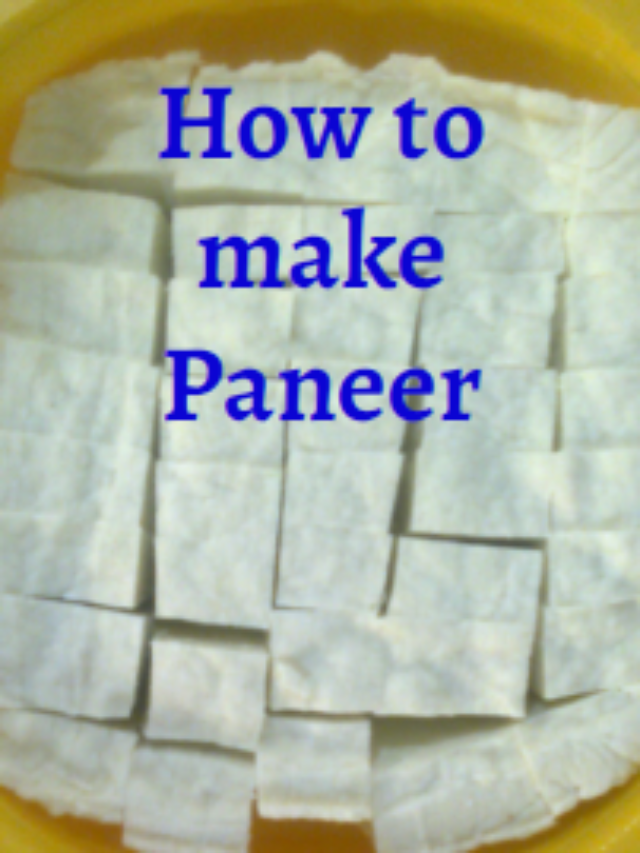Cheese Vs Paneer: Cheese and paneer are both dairy products made from milk, but they differ in terms of their preparation, taste, texture, culinary uses etc.
1. Preparation method: Cheese is made by curdling milk (coagulation of the milk protein casein) using rennet or specific cultures, followed by processes like pressing, aging, and flavoring. Paneer, on the other hand, is made by curdling milk with an acidic ingredient like citric acid, lemon juice, vinegar etc. followed by pressing and chilling without the need for aging.
2. Ingredients: Cheese is made from the curdled milk of cows, goats, sheep, or other animals, while paneer is made from cow or buffalo milk or a combination thereof.
3. Fermentation: Cheese undergoes a fermentation process, where specific bacterial cultures are added, while in paneer no bacterial cultures are added.
4. Aging: Cheese is often aged for varying periods, ranging from a few weeks to several years, to develop its flavor and texture. Paneer is typically consumed fresh and not aged.
5. Texture: Cheese comes in a wide range of textures, including soft, semi-soft, firm, and hard. It can be creamy, crumbly, or stretchy depending on the type. Paneer, on the other hand, has a delicate, crumbly texture. It is soft and doesn’t have the same level of elasticity as some cheeses.
6. Taste: Cheese has a diverse range of flavors, from mild and creamy to sharp and tangy, depending on the type and aging process. Paneer, on the other hand, has a mild and slightly sweet taste. It does not undergo the same aging process as most cheeses, so its flavor is more subtle.
7. Fat content: Cheese typically contains higher fat content compared to paneer. Cheese can have varying fat levels depending on the type, ranging from low-fat to high-fat options. Paneer is generally made from whole milk, which contains a moderate amount of fat.
8. Nutritional profile: The nutritional profile of cheese and paneer can vary based on the specific type and fat content. Cheese can provide a good source of protein, fat, calcium, and vitamins. Paneer also contains protein, fat, calcium, and vitamins, but the nutrient composition can differ depending on the type of milk used and the preparation method.
9. Melting properties: Cheese has excellent melting properties due to its composition and aging process. It melts when heated, becoming gooey and stretchy. Paneer, on the other hand, does not melt like cheese. It retains its shape and crumbly texture when heated making it suitable for grilling or pan-frying without losing its form.
10. Shelf life: Cheese has a longer shelf life due to its aging process, which helps to preserve it. Paneer has a shorter shelf life and is best consumed within a few days of preparation.
11. Culinary uses: Cheese is widely used in various cuisines around the world. It can be consumed on its own, melted, grated, or incorporated into a wide range of dishes like sandwiches, pizzas, pastas, and salads. Paneer, on the other hand, is commonly used in Indian cuisine, especially in vegetarian dishes. It is often cubed and added to curries,
stir-fries, or grilled as a standalone ingredient.
12. Cultural significance: Cheese is widely consumed and has cultural significance in many countries around the world, particularly in Europe. Paneer holds cultural significance in Indian cuisine and is a staple ingredient in vegetarian dishes.





